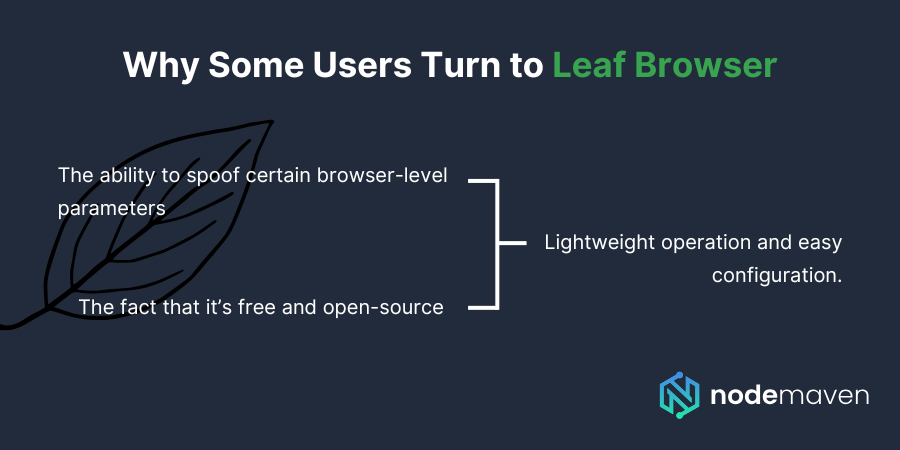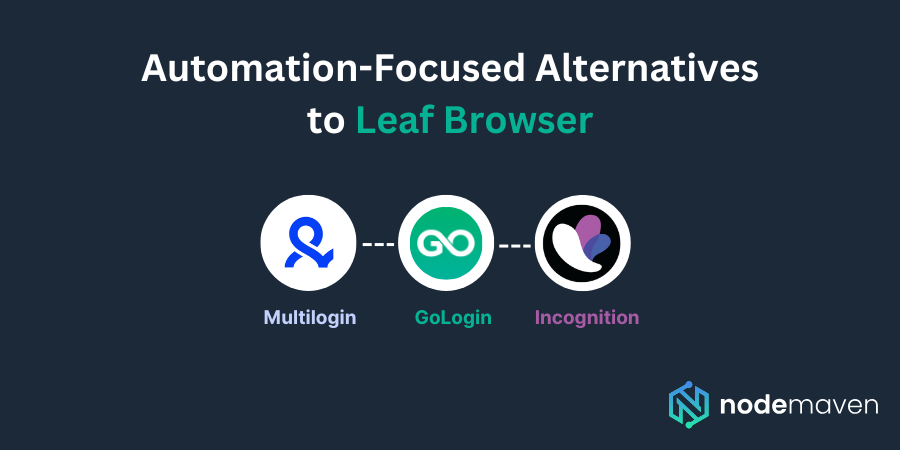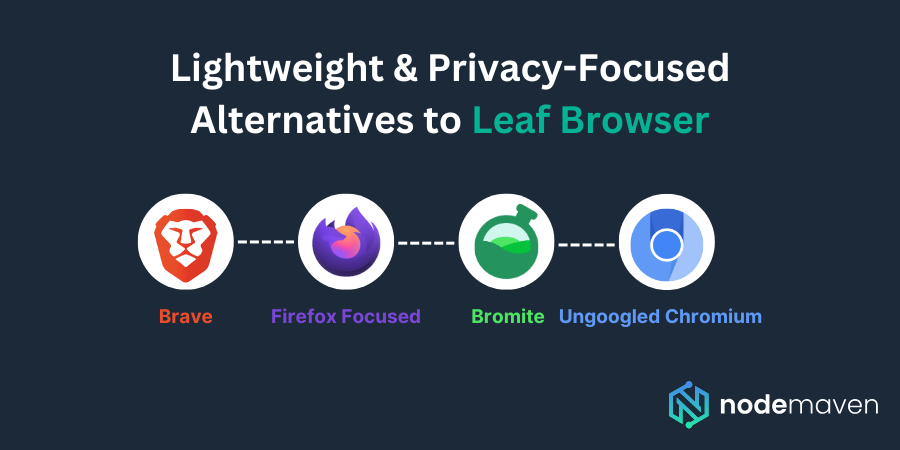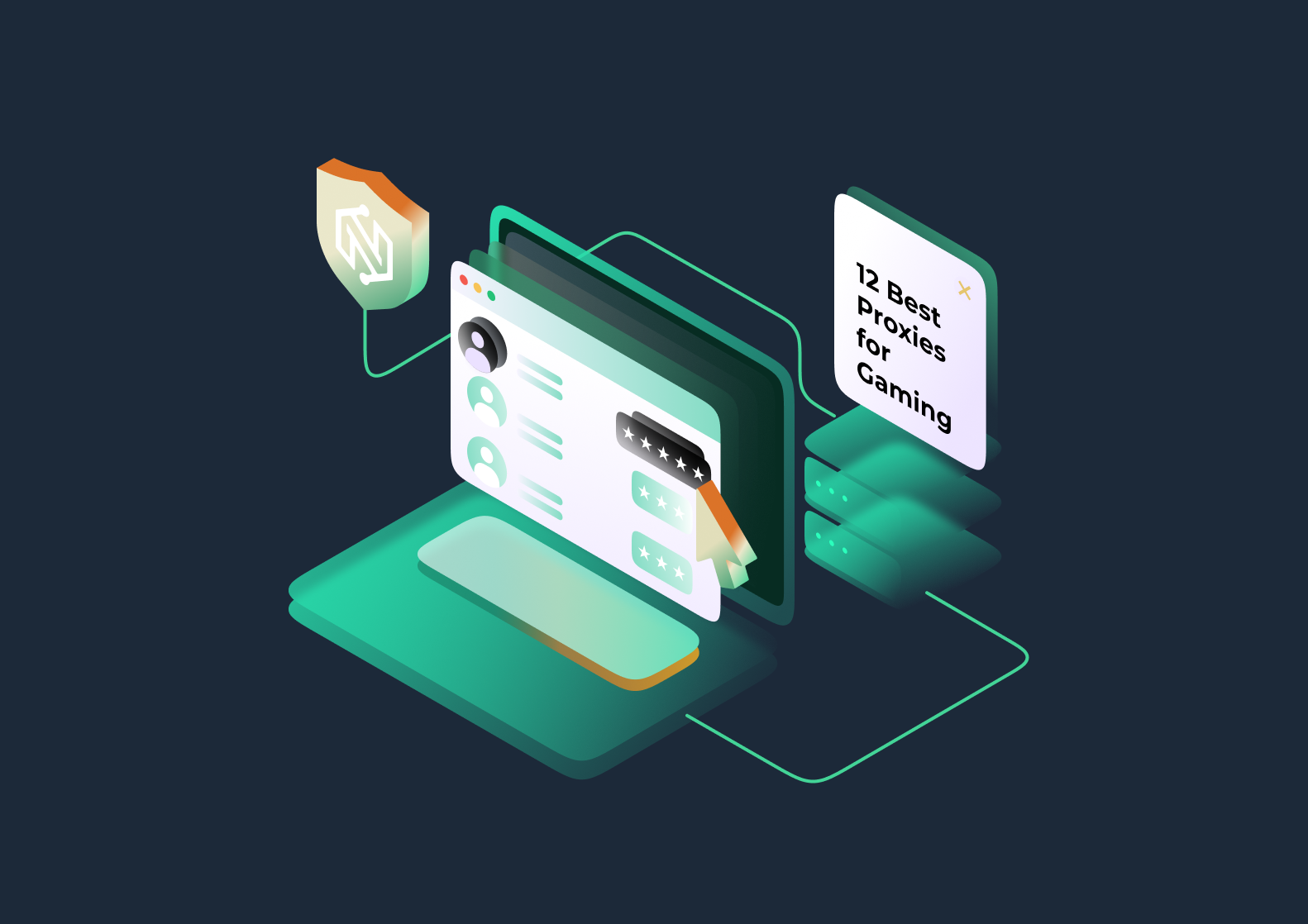In the world of automation, digital privacy, and stealth marketing, tools like Leaf Browser have gained notable attention. Designed for advanced browser manipulation and identity spoofing, Leaf Browser serves as a basic gateway to anonymous or automated browsing.
But as privacy standards tighten and detection technologies evolve, many users have begun exploring Leaf Browser alternatives and upgrading their stack with better anonymity tools and residential proxies.
In this article, we’ll dive deep into what Leaf Browser is, its use cases, its limitations, and the best proxy-compatible alternatives in 2025. We’ll also show how platforms like NodeMaven empower users to stay undetected across automation and scraping workflows.
What Is Leaf Browser?
Let’s be real – the name “Leaf Browser” might sound like a peaceful, tree-hugging version of Chrome, but it isn’t here to admire nature.
Originally it was designed for developers and automation nerds, but then Leaf Browser became a bit of an underground favorite for people trying to bend the rules of the web: scraping data, managing multiple social media accounts, testing apps, or even farming digital identities.
Why? Because it was lightweight, free, and didn’t ask too many questions. You launch a session, you get a new identity, and you’re off to the races.
Think of it as a getaway car with no tinted windows. It gets you going fast, but you’re still visible to every traffic camera (read: detection system) out there.
Why Some Users Turn to Leaf Browser for Web Automation
Leaf Browser is especially popular among developers, web scrapers, and affiliate marketers looking to run parallel sessions with different identities.
Its minimal UI and open-source nature make it easier to customize for automated workflows, at least at a basic level. It gained popularity due to:

However, the real reason people use Leaf Browser isn’t the power it has, but the limitations it helps them bypass. Let’s take a closer look at those applications.
Common Use Cases of Leaf Browser
Leaf Browser found its footing among digital professionals who rely heavily on anonymity and automation. Let’s break down some of the most common use cases.
Web Scraping and Automation
One of the most common use cases for Leaf Browser is browser-based scraping. By simulating different browser profiles, users can scrape websites that otherwise detect repetitive bot behavior.
- Scraping e-commerce product data.
- Collecting social media analytics.
- Monitoring price changes across different websites.
Leaf Browser acts as a front-end controller for these tasks, often paired with proxy servers and browser automation frameworks.
Social Media Management and Account Farming
Affiliate marketers and social media automation experts often use Leaf Browser to manage multiple accounts from the same machine.
- Facebook and Google account farming.
- Running ad accounts for clients.
- Operating outreach campaigns from different identities.
By simulating isolated browser sessions, Leaf Browser helps reduce the chance of mass suspensions or bans, although its limitations can quickly become an issue for larger-scale operations.
Bypassing Browser Fingerprinting and Anti-Bot Systems
Websites today use dozens of fingerprinting vectors to detect fake sessions. From canvas fingerprinting to WebRTC leaks and language headers, the modern internet is full of traps.
Leaf Browser offers limited customization to spoof some of these identifiers, but users often need more sophisticated setups when dealing with highly protected websites.
Drawbacks and Risks of Using Lеaf Browser
Despite its popularity, Leaf Browser comes with a handful of significant drawbacks that have become more obvious in recent years.
Security Concerns and Detection Risks
Leaf Browser is open-source and doesn’t have the same ongoing security updates or community audits as more established tools. This poses risks:
- No encryption of session data.
- Weak fingerprint masking.
- Prone to browser fingerprinting by advanced detection systems.
Lack of Updates, Support, or Transparency
The browser hasn’t seen major updates recently, and there’s limited documentation or community support. For professional users managing business-critical workflows, this is a serious red flag.
Compatibility Issues with Modern Anti-Detect Technologies
Leaf Browser was never designed to go head-to-head with platforms like Google, Meta, or Amazon, each of which uses AI-powered anti-bot systems. As a result, many users are now turning to more robust alternatives.
Best Leaf Browser Alternatives in 2025
If you’re on the hunt for a Leaf Browser alternative, it’s important to clarify your intent first. Are you looking for something that allows automation, multiple browser identities, and fingerprint spoofing? Or do you simply want a lightweight, privacy-friendly browser that doesn’t hog resources?
Below, we’ve split the best alternatives into two categories: those geared toward automation and anti-detection, and those for general browsing with a privacy-first focus.
Automation-Focused Alternatives
These are the true Leaf Browser replacements for web scrapers, affiliate marketers, account managers, and automation specialists.
If you’re here for power tools that mimic real users at scale, start with these:

Multilogin
- Best for: Professional marketers and agencies
- Key features: Advanced fingerprint management, cookie syncing, profile isolation, team collaboration
- Drawbacks: Higher price point and learning curve
GoLogin
- Best for: Solo users and small teams
- Key features: Clean UI, flexible subscription plans, good performance with anti-detect protection
- Drawbacks: Fewer features compared to Multilogin’s enterprise setup
Incogniton
- Best for: Entry-level automation and profile management
- Key features: Free version available, robust profile configuration, browser automation API support
- Drawbacks: Slightly less stable with high-scale botting or scraping
These platforms are ideal if you need to simulate thousands of users, manage ad accounts, or scrape websites without triggering detection systems.
Lightweight & Privacy-Focused Alternatives
On the other end of the spectrum, there’s a large group of users who appreciated Leaf Browser for its simplicity, fast performance, or bare-bones interface, not necessarily its stealth.
If that sounds like you, consider one of these browsers:

Brave
- Best for: Users who want speed + privacy
- Key features: Built-in ad-blocking, shields against tracking, optional TOR tab browsing
- Drawbacks: May occasionally break websites due to aggressive privacy defaults
Firefox Focus
- Best for: Minimalist mobile browsing
- Key features: Auto-clears history on close, blocks trackers by default
- Drawbacks: No tabs or extensions, strictly for focused one-tab browsing
Bromite
- Best for: Android power-users who want Chrome without Google
- Key features: Based on Chromium, adds ad-blocking and enhanced privacy
- Drawbacks: Only available on Android, no official support team
Ungoogled Chromium
- Best for: Desktop users seeking full control and zero background tracking
- Key features: Chromium engine stripped of all Google dependencies
- Drawbacks: Not user-friendly out of the box, no auto-updates, manual config needed
While these browsers won’t let you spoof browser fingerprints or run stealth automation, they are excellent for staying private and browsing fast, perfect if you’re just looking to escape the Google or Facebook surveillance vortex.
How to Choose the Right Leaf Browser Alternative
The best Leaf Browser alternative depends on your specific needs. Here’s a quick decision flow:
- Need to automate and stay undetected? → Go with Multilogin or GoLogin
- Want something free and lightweight for simple browsing? → Try Firefox Focus or Bromite
- Looking to replace Leaf with something clean and Chrome-like? → Ungoogled Chromium might be your jam
- Want a privacy-first browser with modern comforts? → Brave is a solid all-around choice
Ultimately, Leaf Browser filled different roles for different people, so your alternative should match the exact job you need it to do.
Why Proxies Are Essential When Using Leaf Browser or Any Alternative
Using an anti-detect browser without a high-quality proxy is like locking your front door and leaving the windows wide open. Websites don’t just look at fingerprints, they also analyze IP data.
Proxies are the key ingredient for staying undetected. They help:
- Route traffic through trusted residential or mobile IPs.
- Rotate your IP addresses per session to prevent bans.
- Mimic the geo-distribution of real users.
Whether you’re using Leaf Browser or its alternatives, pairing them with high-quality rotating residential or static proxies is absolutely essential.
How NodeMaven Helps You Stay Undetected in Leaf Browser & Beyond
NodeMaven is designed specifically for stealth-critical workflows, whether you’re scraping data, managing accounts, or building AI automation stacks.
Here’s how NodeMaven can help:
- Residential Proxies
- Access millions of high-quality residential IPs across 150+ countries.
- Real-user connections from devices like smartphones, PCs, and routers.
- Great for dynamic IP rotation in scraping and account farming.
- Static Residential Proxies
- Maintain consistent sessions with long-term IPs.
- Excellent for ad accounts, social media logins, and marketplace storefronts.
- Undetectable ASNs make sure you don’t get flagged.
- Rotating Residential Proxies
- Automatically rotate IPs per request or on a time interval.
- Bypass bot protection systems like PerimeterX, Cloudflare, and Datadome.
- Scalable for enterprise-grade scraping and automation.
- Scraping Browser
- A fully managed anti-detect browser that runs in the cloud.
- Mask browser fingerprints and combine with our proxy pool for total stealth.
- Launch thousands of sessions at scale using Playwright, Puppeteer, or Selenium.
Whether you’re upgrading from Leaf Browser or scaling up your entire operation, NodeMaven provides the tools to stay invisible, compliant, and effective.
Leaf Browser served a unique purpose when web automation tools were limited and detection systems were less evolved. But in 2025, professional users need more than just browser spoofing, they need real-user IPs, fingerprint masking, and scalable infrastructure.
If you’re still using Leaf Browser, consider leveling up with better alternatives and pairing your setup with high-quality proxies.
And if you want to stay ahead of detection systems without the overhead, NodeMaven is here to help you go stealth at scale.


